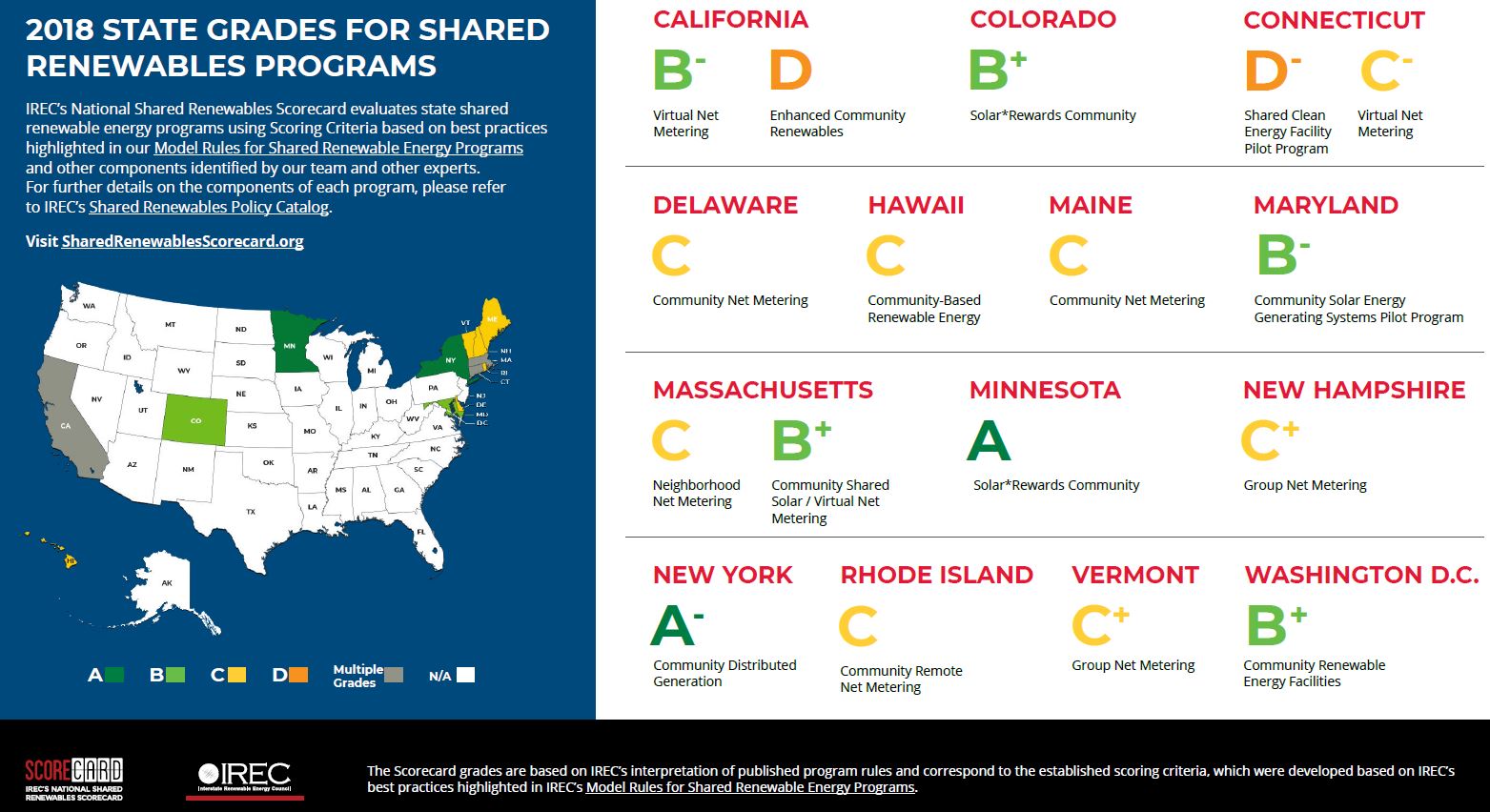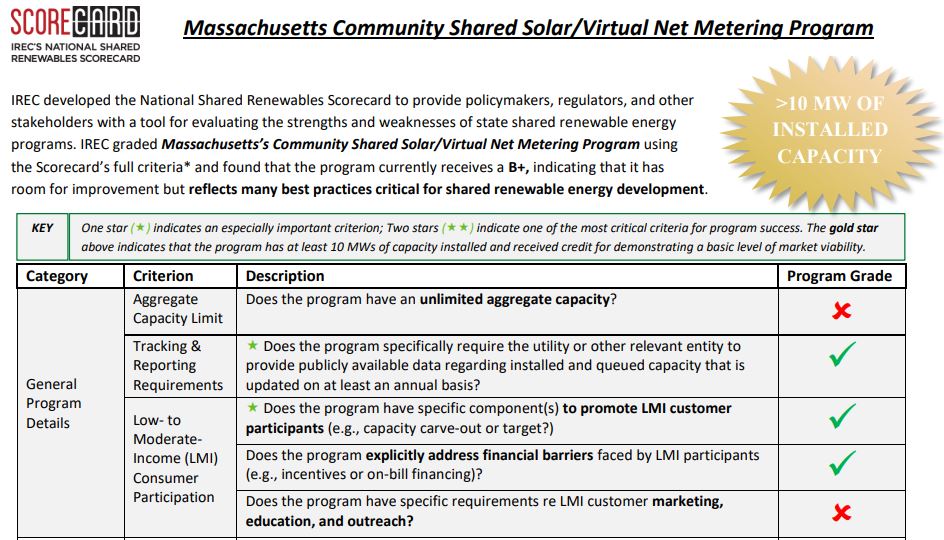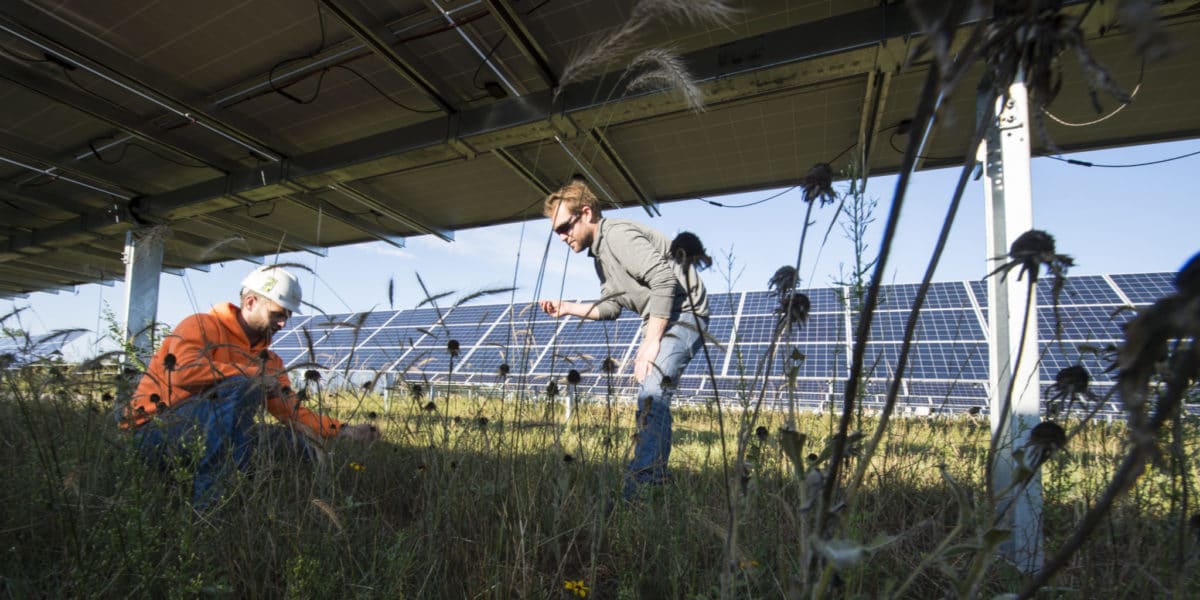The Interstate Renewable Energy Council (IREC) has released the 2018 version of its National Shared Renewables Scorecard. The purpose of the project is to share the experiences of implemented “shared renewable” programs across the United States among policy makers.
This year’s report analyzes and rates 17 individual programs within the 13 states and Washington DC that have implemented them. IREC has also released a high level national scorecard – below – to give a broad description of the programs. Further down in the report individual programs are given much more in-depth analysis.

Of the nation’s 17 program analyzed by the IREC, seven had grades from A through B –
- A grades (2) (12%)—Minnesota and New York. These states have incorporated the majority of shared renewables best practices identified by IREC.
- B grades (B) (29%)—California (Virtual Net Metering), Colorado, Washington, D.C., Massachusetts (Community Shared Solar/Virtual Net Metering) and Maryland. Although these states have some room for improvement, their programs reflect many best practices and offer solid foundations for shared renewable energy development.
The Scorecard grades statewide “shared renewable energy” or “shared renewables” programs, which IREC defines as programs that enable multiple customers to share the economic benefits of one renewable energy system via their individual utility bills (typically through bill credits). The Scorecard does not capture voluntary, utility-level programs or “community” renewables programs, such as green tariff shared renewables, group purchasing or aggregate net metering programs.

The group goes deeper into individual state programs (example above) and evaluates them on multiple aspects within each five unique areas:
- General program details
- Customers and subscriptions
- Generation systems
- Bill credits
- Renewable energy credits
These longer documents can be found at the bottom of the front page of their site under individual state program rankings.
IREC has also included a page for local policy holders to rate their own programs.
Community Solar and similar shared renewable energy programs have shown extensive growth in the United States, with the total capacity of renewables deployed under these programs growing more than doubling from 387 MW at the end 2016, to 734 MW at the end of 2017. This analysis includes a larger swatch of programs than are being analyzed by IREC, in at least 33 states. It seems there is a healthy ecosystem of ideas developing, all trying to move the shared renewables and community solar market forward.
This content is protected by copyright and may not be reused. If you want to cooperate with us and would like to reuse some of our content, please contact: editors@pv-magazine.com.









By submitting this form you agree to pv magazine using your data for the purposes of publishing your comment.
Your personal data will only be disclosed or otherwise transmitted to third parties for the purposes of spam filtering or if this is necessary for technical maintenance of the website. Any other transfer to third parties will not take place unless this is justified on the basis of applicable data protection regulations or if pv magazine is legally obliged to do so.
You may revoke this consent at any time with effect for the future, in which case your personal data will be deleted immediately. Otherwise, your data will be deleted if pv magazine has processed your request or the purpose of data storage is fulfilled.
Further information on data privacy can be found in our Data Protection Policy.